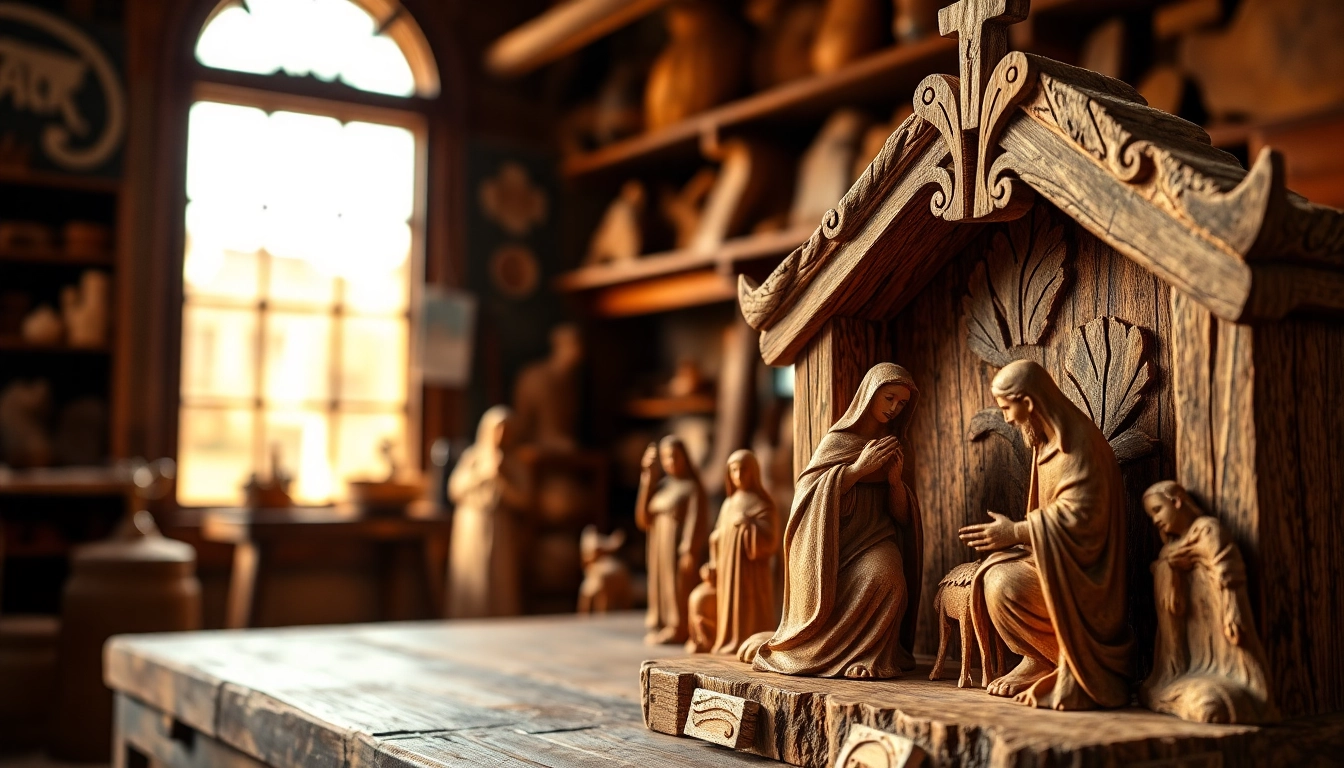Understanding Olive Wood Carvings
Olive wood carvings, a traditional art deeply rooted in the history of the Holy Land, have captured the attention of artisans and collectors around the world. Renowned for their intricate designs and connection to both culture and spirituality, these carvings represent more than mere decorations; they are symbolic pieces that carry significant meaning. From the sacred olive trees of Bethlehem and Jerusalem, local artisans have fashioned these stunning works, each one imbued with a story and a heritage that dates back centuries. The artistry involved in creating olive wood carvings reflects not only the skill but also the passion and devotion of the craftsmen who dedicate their lives to this age-old practice.
History of Olive Wood Artistry
The tradition of olive wood carving in the Holy Land is ancient, with roots that trace back thousands of years. Artifacts from the Roman period, which included decorative wooden pieces, reveal that even then, olive wood was prized for its durability and aesthetic properties. The olive tree, a symbol of peace and longevity, has played an integral role in the cultural landscape of the region. Over the years, the craft has been passed down through generations, with artisans honing their skills and adapting their techniques while preserving the essence of their cultural heritage.
Cultural Significance of Olive Wood Carvings
In many cultures, especially those influenced by Christianity, olive wood carries significant spiritual weight. The tree itself is often seen as a symbol of hope, peace, and prosperity. Carvings made from this wood typically represent religious figures, scenes from the Bible, and various icons that are integral to worship and cultural celebrations. The wood’s association with sacred stories enhances the value of each carving, making them highly sought after, not just as art pieces but as cherished artifacts of faith.
Key Features of Olive Wood
One of the hallmarks of olive wood is its unique grain, which showcases a rich interplay of colors ranging from creamy whites to deep browns, often highlighted with darker streaks. The density and strength of the wood make it particularly suitable for intricate carvings. Additionally, olive wood is aromatic, with a natural, pleasant scent that enhances its appeal as a decorative piece. The wood’s natural oils give it a smooth finish that becomes more pronounced over time, making it not only resilient but increasingly beautiful as it ages.
Types of Olive Wood Carvings
Nativities and Religious Symbols
Among the most popular types of olive wood carvings are nativity scenes and religious symbols. These pieces often depict the Holy Family, angels, or other significant figures in Christian history. Each nativity set is uniquely crafted, often emphasizing facial expressions and intricate details, which allow viewers to connect emotionally with the representations. These carvings are not just seasonal decorations; they serve as year-round reminders of faith, tradition, and the spiritual narrative of Christianity.
Decorative and Functional Art Pieces
In addition to religious figures, olive wood artisans produce a broad array of decorative items such as bowls, crosses, and even furniture. These functional art pieces often combine beauty with practicality, serving as both a display of craftsmanship and a usable item. Items like olive wood trays or kitchen utensils offer a rustic charm that adds warmth to any setting, embodying the traditional craftsmanship while catering to modern decorative trends.
Creating Personalized Olive Wood Gifts
Personalization adds a unique touch to olive wood carvings, allowing them to become memorable gifts or keepsakes. Many artisans offer customization options, such as engraving names, dates, or special messages into the wood. This not only enhances the sentimental value of the pieces but also allows them to be cherished as family heirlooms. Whether for weddings, anniversaries, or other special occasions, personalized olive wood gifts encapsulate meaningful moments and memories.
The Crafting Process of Olive Wood Carvings
Tools and Techniques Used by Artisans
The art of carving olive wood requires a combination of skill, experience, and the right tools. Traditional artisans often rely on hand tools, including chisels, gouges, and knives, to shape the wood. The precision involved in hand-carving allows for intricate designs that machine processes cannot replicate. Techniques such as relief carving and inlay work are common, showcasing the artisan’s ability to bring life to the wood through detailed craftsmanship.
Sourcing Sustainable Olive Wood
Sustainability is of paramount importance in the production of olive wood carvings. Artisans predominantly use wood from fallen or pruned trees rather than cutting down healthy trees. This practice not only ensures the longevity of the olive groves but also maintains the ecological balance of the region. By sourcing sustainably, artisans can preserve the age-old traditions while contributing positively to the environment.
The Journey from Tree to Art Piece
The journey of olive wood from tree to art piece involves several meticulous steps. Initially, the wood is cut and dried to a certain moisture level, which can take several months. Once ready, artisans can begin carving. Following the carving, each piece is often sanded and polished, sometimes finished with a natural oil to enhance its appearance and durability. This labor-intensive process results in stunning works of art, each carrying the unique characteristics of the wood and the artisan’s skill.
Caring for Your Olive Wood Carvings
Cleaning and Maintenance Tips
Caring for olive wood carvings is essential to preserving their beauty and integrity. Regular dusting with a soft cloth can prevent the accumulation of grime. For more thorough cleaning, using a mild soap solution and avoiding submerging the wood in water can help maintain its finish. Applying food-safe mineral oil or beeswax occasionally can restore the wood’s luster, protecting it from drying out.
Restoration of Antique Carvings
Antique olive wood carvings may require special attention to restore their former glory. Restoration involves carefully cleaning the piece to remove dirt and grime, followed by repairing any cracks or damages. This process should be undertaken by professionals who understand the intricacies of olive wood and can apply the appropriate techniques without compromising the integrity of the piece.
Preserving the Beauty of Olive Wood
To ensure that olive wood carvings remain vibrant and beautiful, it’s crucial to keep them away from extreme temperatures and humidity. Displaying them in a stable environment can prevent warping or cracking. Regular maintenance, combined with thoughtful storage and display options, will enable these artworks to be appreciated for generations.
Where to Buy Authentic Olive Wood Carvings
Exploring Artisan Markets in the Holy Land
For those seeking authentic olive wood carvings, visiting artisan markets in the Holy Land offers a unique opportunity to see craftsmanship up close. Markets in Bethlehem and Jerusalem offer an abundance of handmade items created by local artisans. Purchasing directly from these markets not only supports the local community but also provides insight into the artisans’ techniques and stories behind their craft.
Online Retailers Specializing in Olive Wood Art
With the rise of e-commerce, numerous online retailers now specialize in olive wood carvings. These platforms feature artworks from various artisans and often provide detailed descriptions of the craftsman and the piece’s history. It’s crucial to select retailers with a reputation for authenticity and ethical sourcing to ensure that the items purchased are genuine and fairly traded.
Understanding Fair Trade Practices
When purchasing olive wood carvings, understanding fair trade practices is essential. Fair trade ensures that artisans receive a fair wage for their work, contributing to their communities’ economic viability. Look for certifications or endorsements from fair trade organizations to ensure that your purchases support equitable practices and sustainable development in artisan communities.



